No products in the cart.
NEWS
February Gardening: Kickstart Your Vegetable Patch by Starting Seeds Indoors
As the grip of winter loosens and the first whispers of spring arrive, the urge to get your hands back into the soil becomes strong. While February might still mean cold weather and grey skies in many regions, it signals the perfect time to gain a valuable head start on your vegetable garden by sowing seeds indoors.
Starting vegetable seeds indoors before the last expected frost offers numerous benefits. It’s a fantastic way to jump-start the growing season, allowing you to harvest earlier. Sowing from seed is also significantly more cost-effective than purchasing pre-grown seedlings later in the spring. For many passionate gardeners, myself included, it’s simply the most enjoyable way to banish winter blues and officially kick off the gardening year. Our experts at Biogarden know the thrill of seeing those first tiny sprouts emerge, and February is when the magic begins for many crops.
Why Start Vegetable Seeds Indoors in February?
The timing of indoor seed starting is crucial for success. Most popular vegetable varieties require approximately six to eight weeks of indoor growth before they are sturdy enough to be safely transplanted into the outdoor garden. This indoor growth period needs to be carefully timed to coincide with your area’s average last frost date.
To determine the ideal sowing time for a specific vegetable, you’ll need to calculate backward from your anticipated last frost date, using the recommended indoor starting time provided on the seed packet. For a wide range of vegetables and many temperate gardening zones, this calculation points directly to February as the prime indoor seed-starting window. It gives your young plants the necessary head start to develop robust root systems and healthy foliage, making them better equipped to thrive once they are moved outside.
Essential Steps for Successful Indoor Seed Starting
Launching your indoor garden doesn’t require extensive equipment, but a few key components are essential. Always begin by consulting the information printed on each vegetable seed packet. These packets are invaluable guides, providing specific instructions on planting depth, spacing, and germination conditions for that particular variety.
You’ll need a light, well-draining growing medium. A high-quality seed-starting mix or potting mix specifically designed for seedlings works best. Avoid using garden soil, which can compact easily and may contain pathogens. Containers with excellent drainage are also critical to prevent waterlogging and root rot. Standard seed trays, biodegradable pots, or even recycled containers with drainage holes added are suitable options. Biogarden.asia offers a variety of premium seed starting supplies designed for optimal results.
Sow the seeds according to the depth and spacing recommendations on the packet. After sowing, gently water the trays to moisten the mix thoroughly. Place the containers in a warm location – many seeds germinate best between 70-80°F (21-27°C). Covering the trays with a clear plastic dome or plastic wrap can help maintain humidity and warmth, creating a mini-greenhouse effect that encourages germination.
Once the seeds sprout, remove any covers and ensure the seedlings receive adequate light. A south-facing windowsill can work if you have bright, direct sunlight for at least 6-8 hours daily, but supplemental grow lights are often necessary, especially in February, to prevent leggy, weak growth. Keep the potting mix consistently moist but not soggy, and maintain a warm environment for your developing seedlings.
Outdoor Seed Sowing Considerations for Warmer Climates
While starting seeds indoors is the norm for February in many regions, gardeners in warmer USDA zones (typically Zone 8 and above) may be able to directly sow certain cool-season vegetables outdoors this month.
If attempting to sow seeds directly into the garden beds in February, it’s crucial to monitor the weather forecast closely. Even in milder climates, unexpected cold snaps or light frosts can occur. Protecting newly sown seeds or young sprouts from potential frost is vital. A layer of light mulch, such as straw, can help insulate the soil. Cold frames or DIY mini greenhouses placed over the planting area provide excellent protection against temperature fluctuations, allowing you to sow earlier with greater confidence.
Top Vegetables to Start in February
As spring draws near, several popular vegetables are perfectly suited for getting an early start by sowing seeds in February. Starting these varieties now ensures they have enough time to mature and produce a bountiful harvest before temperatures become too hot (for cool-season crops) or to maximize their yield during the peak summer months (for warm-season crops). Biogarden.asia offers a curated selection of reliable, high-quality seeds ideal for your early spring planting efforts.
Onions and Leeks
These alliums are excellent candidates for early indoor starting due to their long growing season, often requiring up to 120 days to reach full maturity depending on the variety.
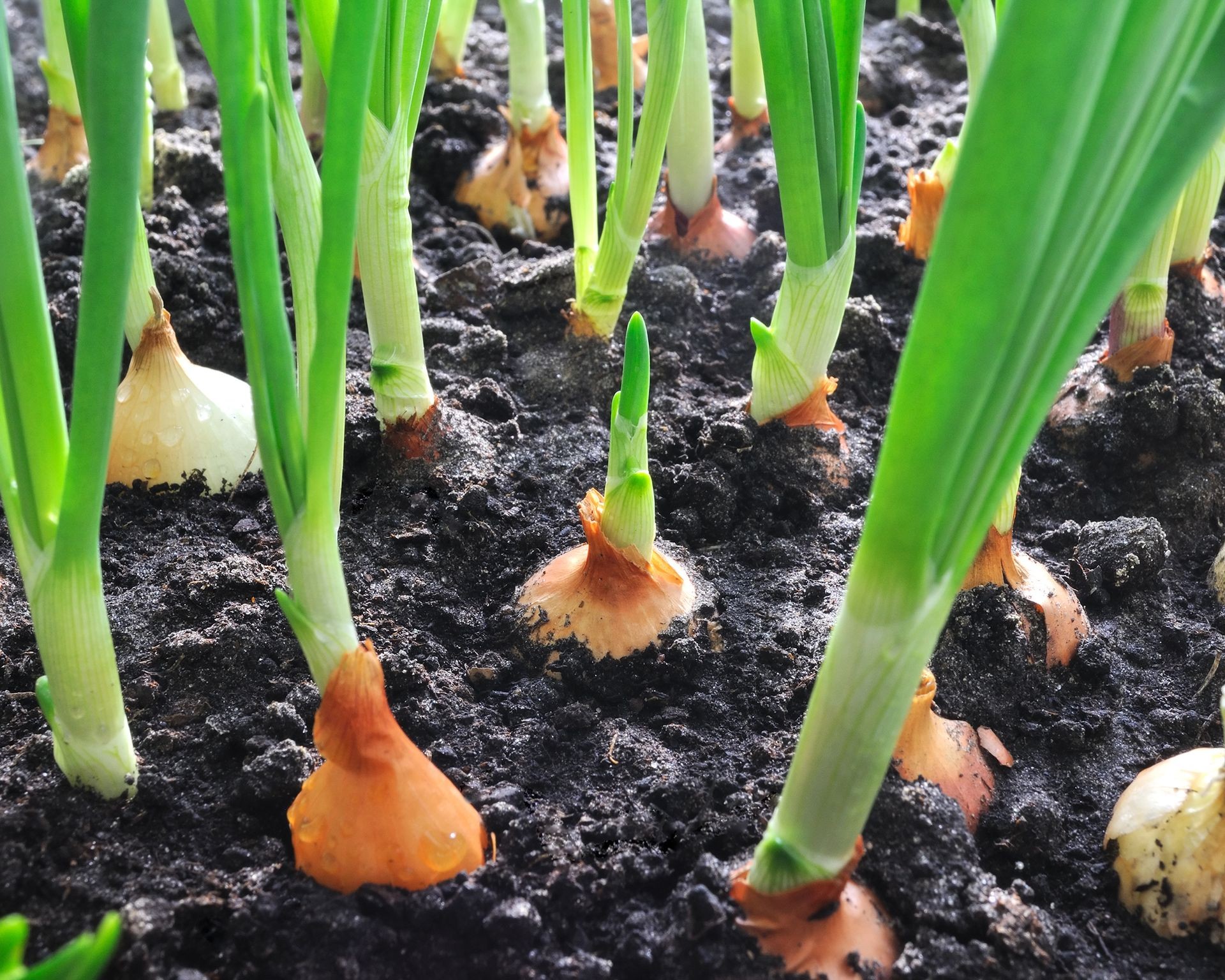 Onions growing in groundFor bulb onions, gently trim the tops back to about five inches (13 cm) whenever they grow taller than this. This technique encourages the plant to focus energy on developing a strong root system and forming larger bulbs. Transplant onion seedlings outdoors after the danger of the last frost has passed. Leeks, similar to onions in their maturity time, are ready for transplanting when their stems are roughly the width of a pencil. They exhibit a bit more tolerance for light frost than onions. For a quicker harvest, consider sowing scallions or green onions, which can mature in as little as 8 weeks and can often be harvested continuously.
Onions growing in groundFor bulb onions, gently trim the tops back to about five inches (13 cm) whenever they grow taller than this. This technique encourages the plant to focus energy on developing a strong root system and forming larger bulbs. Transplant onion seedlings outdoors after the danger of the last frost has passed. Leeks, similar to onions in their maturity time, are ready for transplanting when their stems are roughly the width of a pencil. They exhibit a bit more tolerance for light frost than onions. For a quicker harvest, consider sowing scallions or green onions, which can mature in as little as 8 weeks and can often be harvested continuously.
Cabbage
Cabbage is a slow-growing cool-season crop that benefits significantly from an early indoor start. Sowing seeds in mid-to-late February in most zones allows the plants sufficient time to form heads and mature before the arrival of intense summer heat, which can cause cabbage to struggle or bolt.
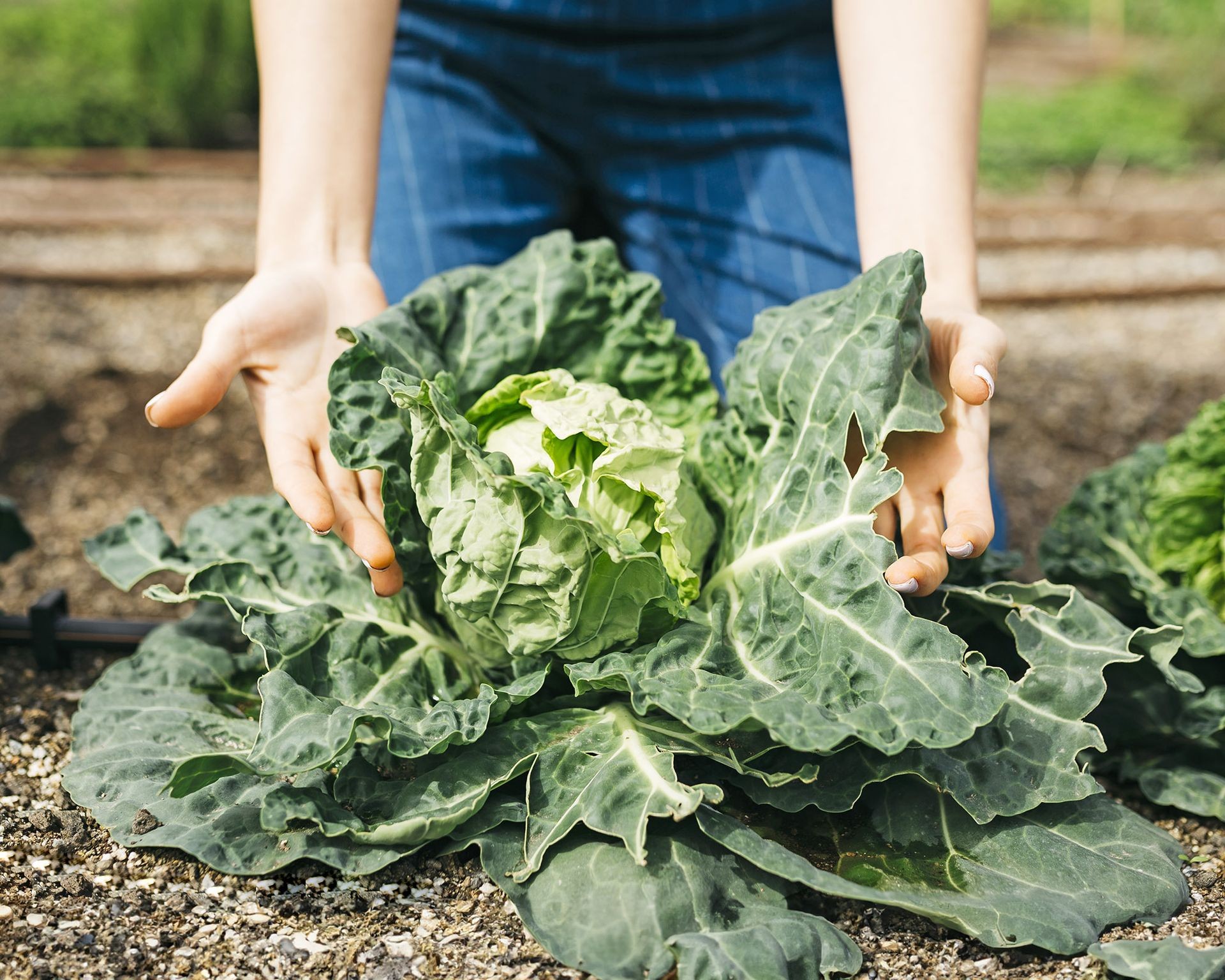 Gardener inspects home-grown cabbageCabbage seedlings can be somewhat sensitive to transplanting shock, so timing is important. Aim to transplant them outdoors while they are still relatively young, ideally around four to five weeks old, and when outdoor conditions are still cool but the hardest frosts are past. Avoid transplanting older, root-bound seedlings.
Gardener inspects home-grown cabbageCabbage seedlings can be somewhat sensitive to transplanting shock, so timing is important. Aim to transplant them outdoors while they are still relatively young, ideally around four to five weeks old, and when outdoor conditions are still cool but the hardest frosts are past. Avoid transplanting older, root-bound seedlings.
Tomatoes
Beloved by gardeners everywhere, tomatoes are remarkably easy to start indoors and are perfectly suited for transplanting later. As warm-weather plants that truly flourish in the heat of summer, starting them indoors provides a controlled environment to get them growing even when outdoor temperatures are far too cold.
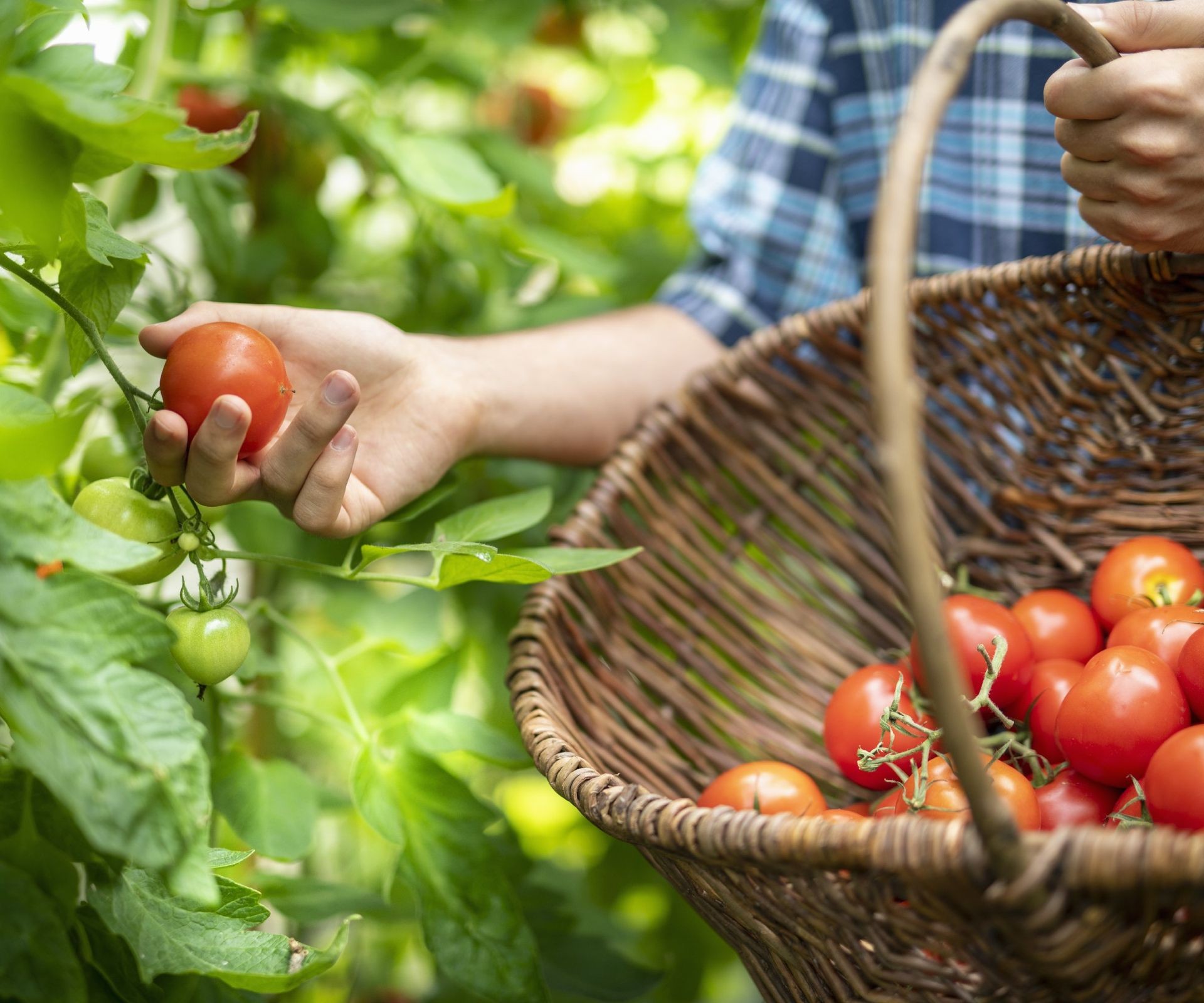 A man picking tomatoes and putting them in a basketCalculate your indoor sowing time based on the specific variety’s days to maturity and your local last frost date. Tomato seedlings are very sensitive to cold and will not survive frost, so delay transplanting them outdoors until well after the risk of the last frost has completely passed and nighttime temperatures remain consistently warm. Biogarden offers a fantastic range of tomato seeds, from classic slicers to paste tomatoes and sweet cherry varieties, ensuring you find the perfect fit for your garden and culinary needs.
A man picking tomatoes and putting them in a basketCalculate your indoor sowing time based on the specific variety’s days to maturity and your local last frost date. Tomato seedlings are very sensitive to cold and will not survive frost, so delay transplanting them outdoors until well after the risk of the last frost has completely passed and nighttime temperatures remain consistently warm. Biogarden offers a fantastic range of tomato seeds, from classic slicers to paste tomatoes and sweet cherry varieties, ensuring you find the perfect fit for your garden and culinary needs.
Peppers
Like tomatoes, peppers (both sweet and hot varieties) are heat-loving plants that perform exceptionally well when started indoors during February and transplanted outdoors once the weather is reliably warm.
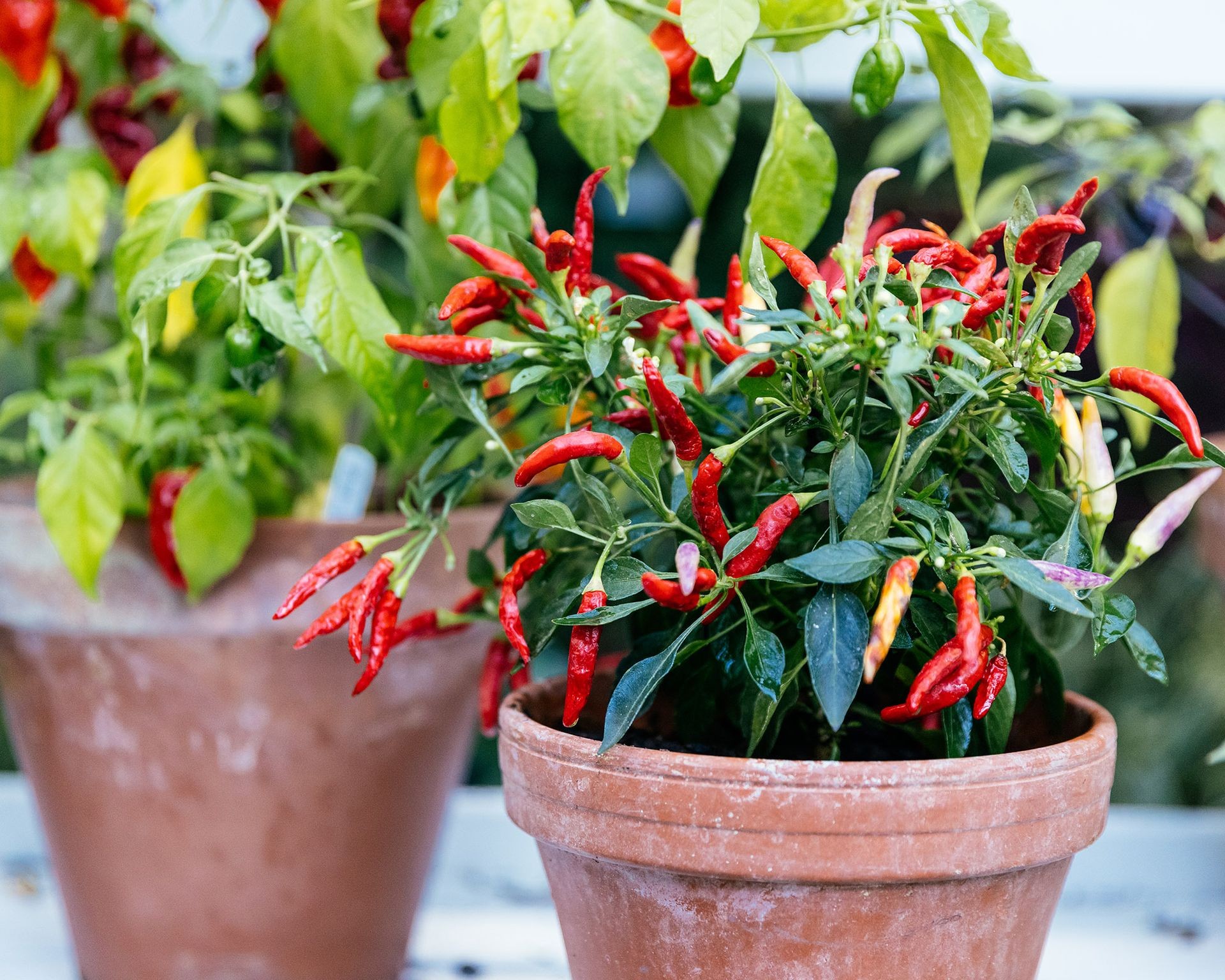 Chili peppers growing in containerHot pepper varieties are particularly well-suited for growing in containers, making them ideal for adding a splash of color and heat to patios, balconies, or small garden spaces. Peppers are even more sensitive to cold temperatures than tomatoes, so keeping your pepper seedlings warm indoors is paramount. Be patient and wait until all danger of cold weather and nighttime temperature drops has completely passed before transplanting them outside. Biogarden.asia offers a diverse selection of pepper seeds to spice up your harvest.
Chili peppers growing in containerHot pepper varieties are particularly well-suited for growing in containers, making them ideal for adding a splash of color and heat to patios, balconies, or small garden spaces. Peppers are even more sensitive to cold temperatures than tomatoes, so keeping your pepper seedlings warm indoors is paramount. Be patient and wait until all danger of cold weather and nighttime temperature drops has completely passed before transplanting them outside. Biogarden.asia offers a diverse selection of pepper seeds to spice up your harvest.
Eggplant
Eggplants are another warm-weather crop that requires a long growing season and consistently warm temperatures to mature from seed. These requirements make them prime candidates for starting indoors during February.
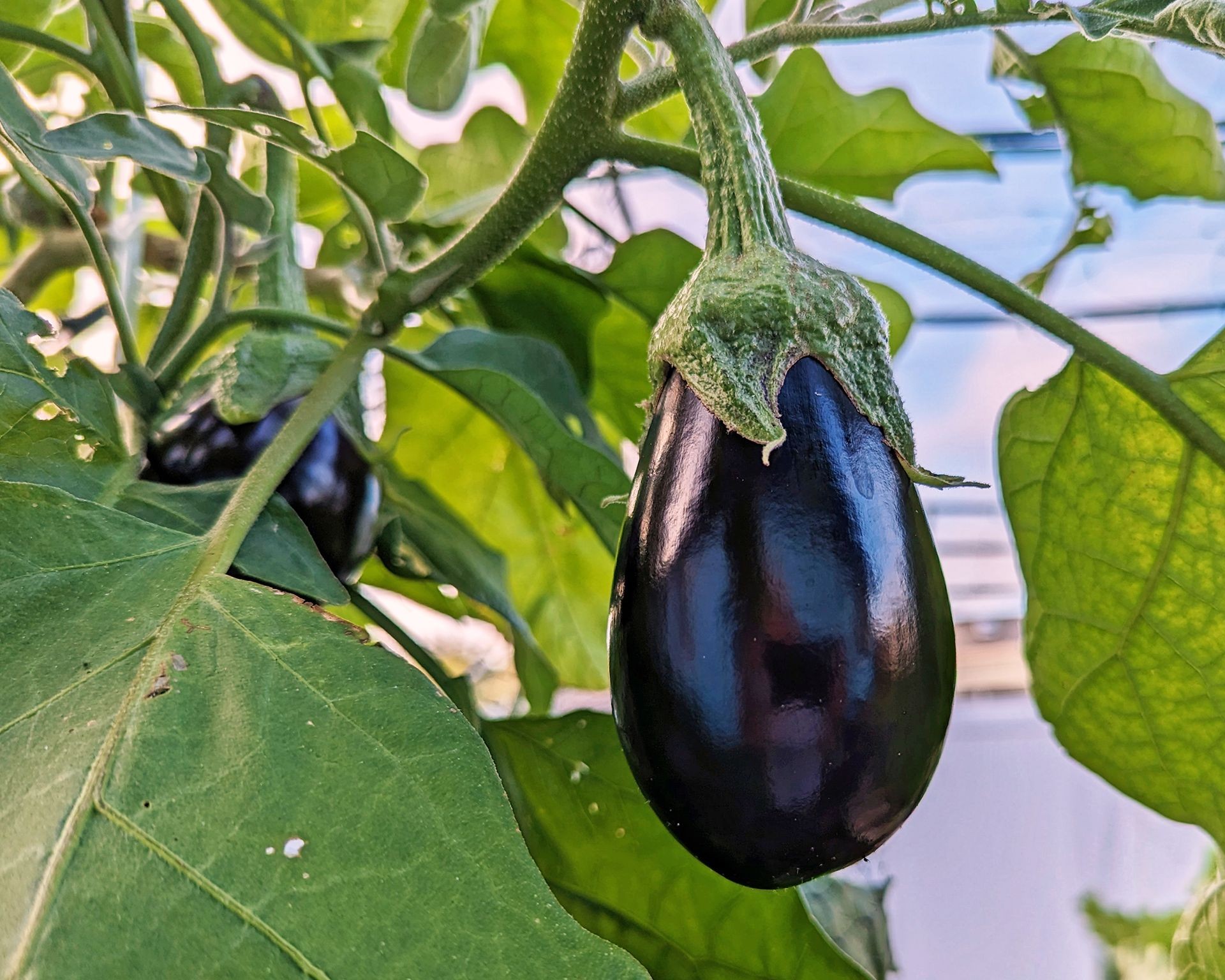 Eggplant growing on vineDepending on the specific eggplant variety you choose and your gardening zone, the best time to start seeds indoors in February is typically around 8 to 10 weeks before your average last frost date. Ensure your eggplant seeds and young sprouts are kept warm and the soil consistently moist as they develop indoors.
Eggplant growing on vineDepending on the specific eggplant variety you choose and your gardening zone, the best time to start seeds indoors in February is typically around 8 to 10 weeks before your average last frost date. Ensure your eggplant seeds and young sprouts are kept warm and the soil consistently moist as they develop indoors.
Kale
For gardeners in zones with milder winters, kale, a hardy cool-weather green, can often be successfully started in February by direct seeding outdoors in prepared beds. With a maturity time ranging from 55 to 75 days, an early February sowing can yield a spring harvest before the weather turns too hot for this crop.
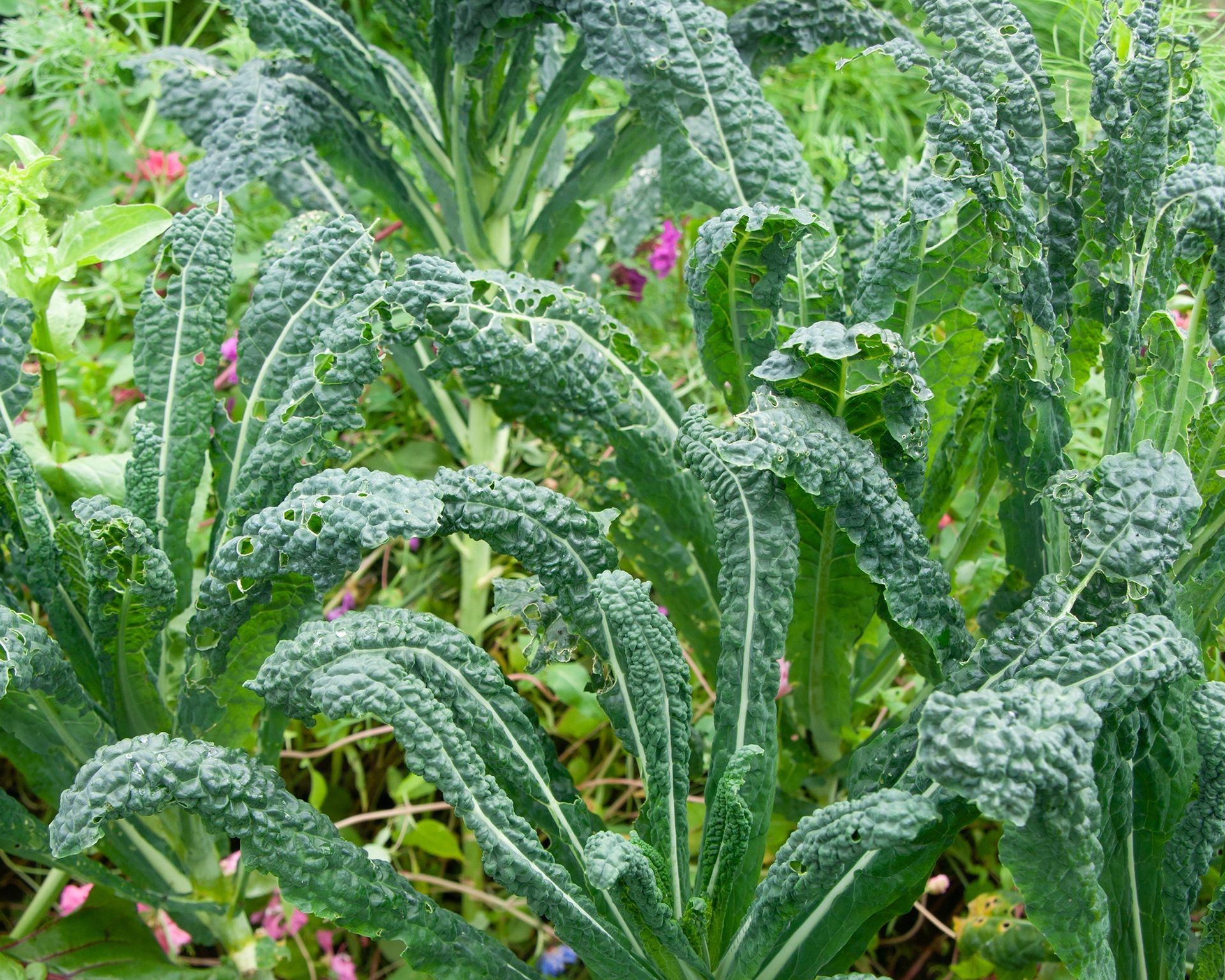 Kale growing in the gardenIn colder climates, kale can also be started indoors and transplanted into the garden in early spring. Kale has a fascinating characteristic: a light exposure to cold weather or even a light frost can actually enhance its flavor, making the leaves taste sweeter. Consider heirloom varieties like Lacinato Kale, which are both visually striking and delicious, available from Biogarden.asia.
Kale growing in the gardenIn colder climates, kale can also be started indoors and transplanted into the garden in early spring. Kale has a fascinating characteristic: a light exposure to cold weather or even a light frost can actually enhance its flavor, making the leaves taste sweeter. Consider heirloom varieties like Lacinato Kale, which are both visually striking and delicious, available from Biogarden.asia.
Radishes
Radishes are celebrated as one of the most beginner-friendly and rapidly maturing vegetables you can grow. Their quick turnaround time and tolerance for cooler weather make them perfect for an early start.
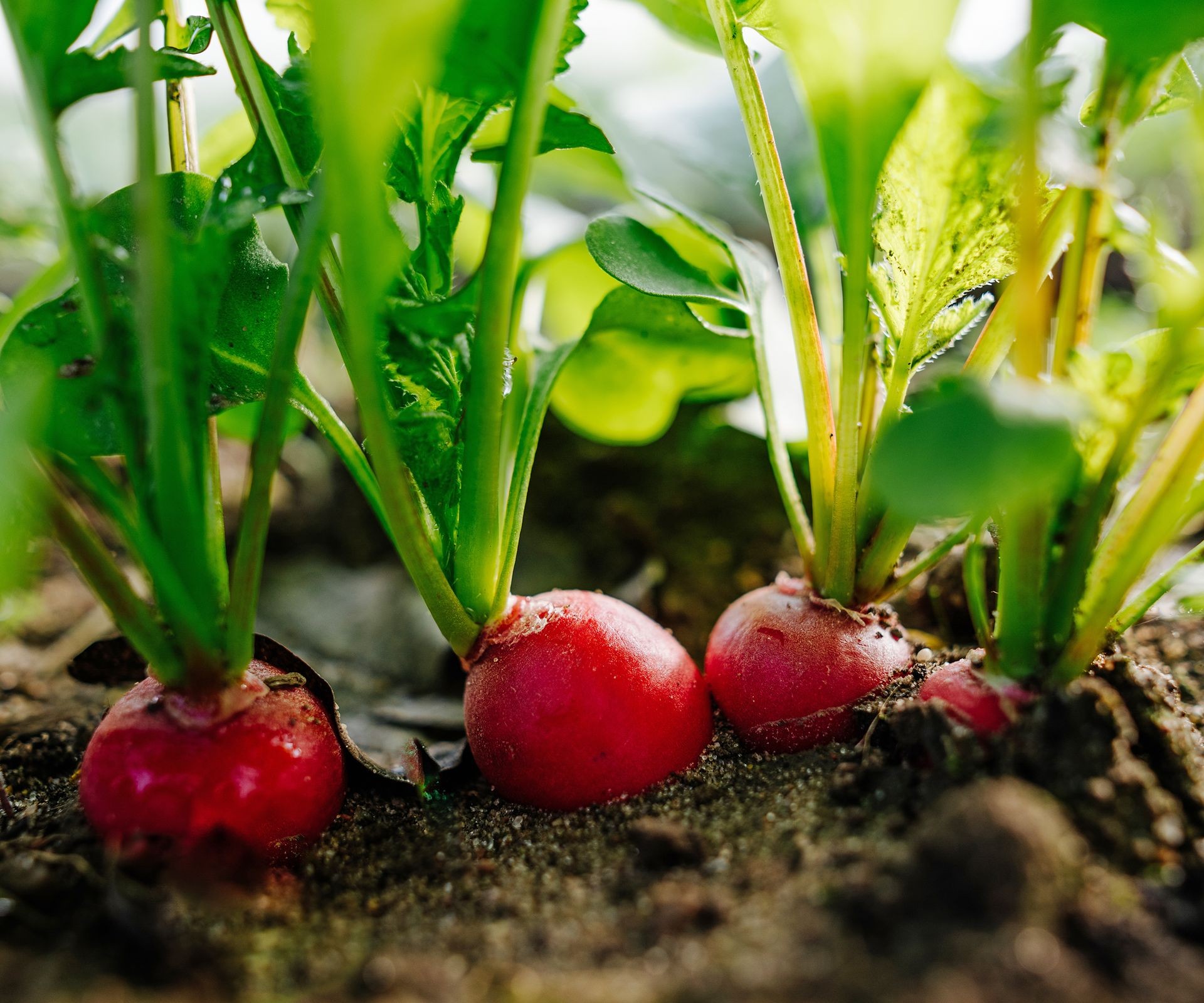 Radishes peeping up through soil in vegetable plotIn many areas, you can direct sow radish seeds outdoors a few weeks before your last expected frost. This early sowing will provide you with one of the very first harvests of the spring season, offering a satisfying crunch and peppery bite just as the garden is truly waking up. Look for vibrant varieties like Rivoli Hybrid for an early season treat. Biogarden.asia offers a selection of radish seeds for a fast and rewarding crop.
Radishes peeping up through soil in vegetable plotIn many areas, you can direct sow radish seeds outdoors a few weeks before your last expected frost. This early sowing will provide you with one of the very first harvests of the spring season, offering a satisfying crunch and peppery bite just as the garden is truly waking up. Look for vibrant varieties like Rivoli Hybrid for an early season treat. Biogarden.asia offers a selection of radish seeds for a fast and rewarding crop.
Get Growing with Biogarden.asia
Starting vegetable seeds indoors in February is a rewarding step towards a productive and enjoyable gardening season. By providing your young plants with the right conditions during their crucial early stages, you’re setting them up for success in the months ahead. This practice not only extends your harvesting period but also connects you deeply with the cycle of growth, bringing the joy of the garden into your home even while winter lingers outside.
At Biogarden.asia, we understand the passion that drives gardeners. We are here to support your efforts with high-quality seeds, essential supplies, and expert advice to help you achieve a thriving vegetable garden. Explore our selection of vegetable seeds and seed-starting supplies online. Get started today and taste the difference that an early start makes!



